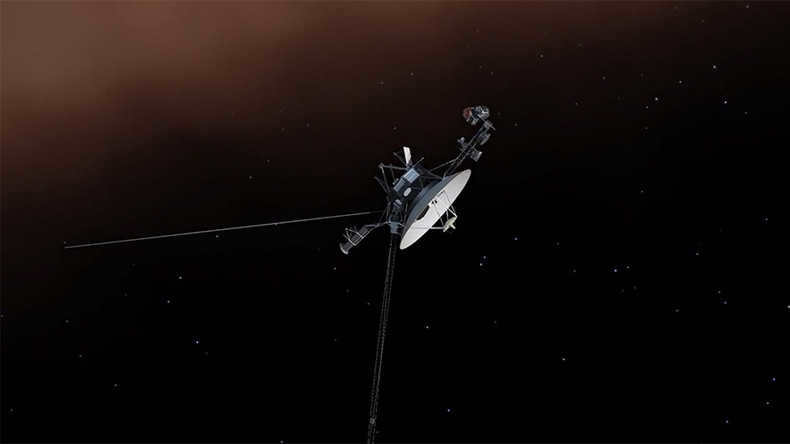
Voyager 1 is renowned for its remarkable achievements in space exploration, including its impressive record-breaking distance of 21337 billion kilometers from Earth and its remarkable operational lifespan of 45 years. However, it has recently encountered an intriguing and paradoxical issue.
The Orientation and Articulation Control Subsystem (AACS) has been transmitting data to ground stations, but the information seems perplexingly nonsensical. For four and a half decades, the AACS has effectively managed the spacecraft’s orientation, ensuring that all instruments are accurately aligned. This includes the crucial task of positioning the antenna in such a way that it consistently points the main lobe of electromagnetic energy radiation towards Earth, enabling seamless communication.
To put it differently, if the information presently being acquired and produced by AACS were indeed a depiction of the spacecraft’s location, we would be unable to acquire it, or would acquire a signal that is at least weaker. Additionally, it appears that no system has entered “safe mode,” a form of hibernation mode in the event of an emergency.
How AACS functions
The AACS system on Voyager operates based on the principle of three-axis stabilization: the probe’s orientation is fixed in relation to external reference points. In the case of Voyager, these reference points are the Sun and a group of “fixed” stars, which are considered fixed because their movement in relation to the solar system is minimal or insignificant.
By knowing the precise positions of the Sun and the stars, the AACS computer can calculate Voyager’s location and the angle of each of its instruments, including the communications antenna. If an error occurs, the AACS computer commands the activation of the hydrazine thrusters (16 primary thrusters and 8 backup thrusters) to reposition the instruments.
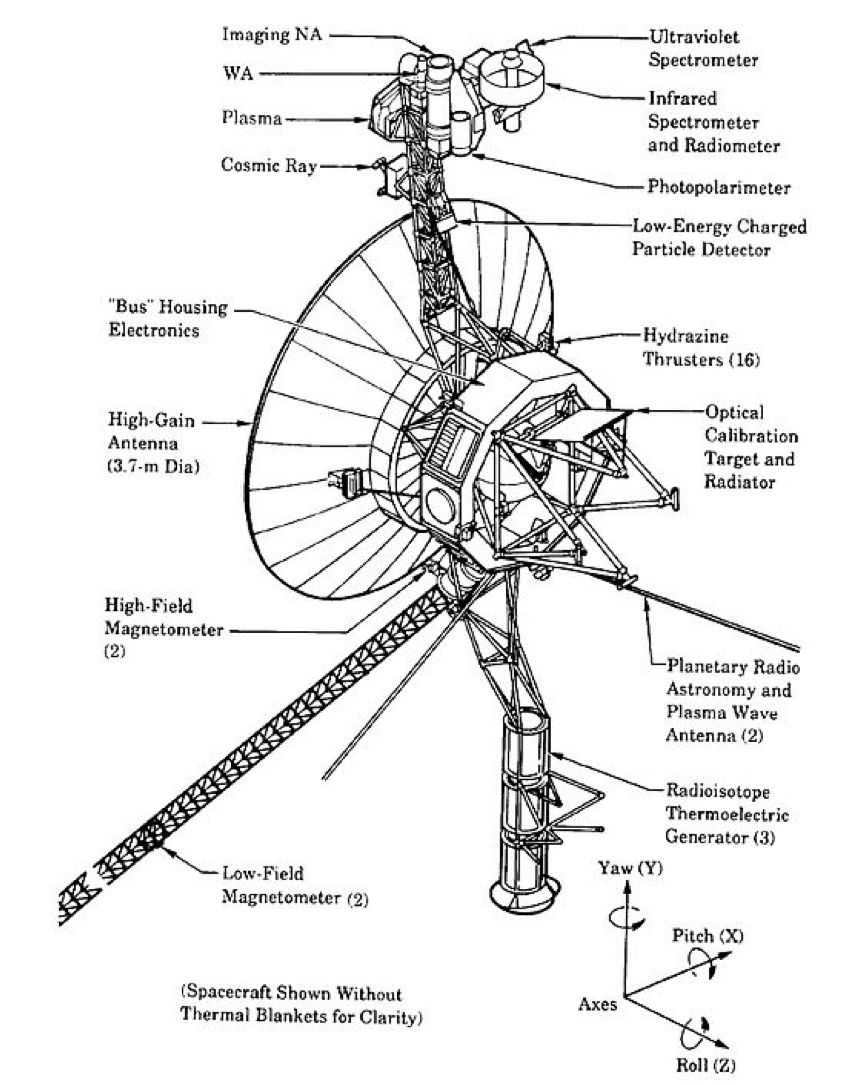
RITEGs fueled by polonium are attached to brackets outside the primary structure to prevent any leakage of radiation near the scientific instruments. Additionally, the magnetometer is positioned away from the main body to avoid any interference from magnetic fields generated by the probe’s instruments.
Moreover, the scanning and imaging platform has been securely fixed to enhance its field of view. When the spacecraft performs maneuvers, these extended arms flex slightly, resulting in increased stress. As a result, the AACS requirements during the maneuvering phase are much more stringent than during the flight phase, as the AACS must effectively manage both the maneuver and the interference caused by the maneuver itself.
For the specific purpose of withstanding maneuvers when approaching planets such as Jupiter, Saturn, and Titan, backup engines were incorporated. The effectiveness of JPL can be confidently affirmed as the backup engines were reinstated in 2017 as a result of deterioration on the primary ones, and despite 37 years of inactivity and exposure to outer space, they have operated flawlessly.
Computer for Onboard Use
The HYPACE control computer, which is 45 years old, has ensured the flawless operation of the AACS for over four decades. HYPACE, short for Hybrid Programmable Attitude Control Electronics, combines one of the earliest digital circuits ever developed with traditional analog circuitry. It utilizes the same 4K-28bit board found in the Viking Orbiter, along with transistor-transistor-logic (TTL) integrated circuit logic, to create a processor capable of performing one million cycles (operations/computations) per second with 28 microsecond (10 MHz) cycles.
Voyager was the pioneering spacecraft to implement this groundbreaking design, and its impressive longevity serves as further evidence of the effectiveness of this system. The probe’s extended lifespan can also be attributed to its high levels of redundancy in both hardware and software.
The main reason why it is incredibly challenging to uncover a solution to the recent mysterious AACS anomalies stems from our lack of knowledge about the environment in which Voyager is currently navigating. With each passing second, our understanding of space expands by 16 km. Currently, Voyager is situated in interstellar space, surpassing the boundary known as the “terminal shock” in 2004. This boundary represents the point at which solar wind particles reach subsonic velocity. Additionally, Voyager has also surpassed the heliopause boundary in 2012, which marks the zone where the solar wind is completely halted by the interstellar medium, resulting in pressure equilibrium. The interstellar medium refers to the sparsely populated material, consisting of gas and dust, that exists between stars.
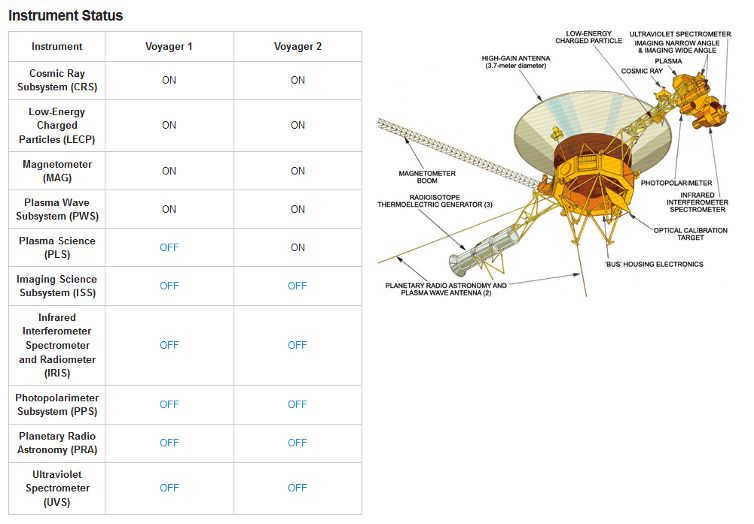
Outer space beyond our solar system
In addition to being a realm of mystery, the space beyond our solar system is an incredibly radioactive environment, which poses challenges for both hardware (causing damage to thermo-optical properties) and software. Specifically, when highly energetic radiation interacts with electronic components inside a satellite, it can lead to what is known as a bit error – a change in the binary code, flipping a 0 to a 1 or vice versa, resulting in unpredictable issues.
Another factor that complicates the identification of the error’s cause is the 20 and a half hour communication delay. This means that it takes approximately two days to send a message and receive a response. Despite these obstacles, Suzanne Dodd, the project manager for Voyager 1 and 2 at JPL, remains optimistic:
It is truly astonishing to consider that there are still engineers who possess extensive expertise in software and hardware that was developed nearly half a century ago, enabling these daring missions to persist.
The RITEGs on Voyager 1 will supply ample power until 2025, when it achieves a distance of 25 billion kilometers, and we anticipate that they will transmit valuable data until the point at which it is projected to encounter the hydrogen wall prior to the bow shock. Subsequently, around 2042, when its continued operation is no longer feasible, it will reach the bow shock.
This is the area in which the interstellar medium slows down to a speed below the speed of sound in a phenomenon resembling the collision of the solar wind with Earth’s magnetosphere. In approximately 30,000 years, Voyager 1 will exit the Oort Cloud entirely and enter the gravitational field of another star. Ultimately, in around 38,000 years, it will position its golden disk approximately 1.7 light-years away from the star Gliese 445 located in the Giraffe constellation.
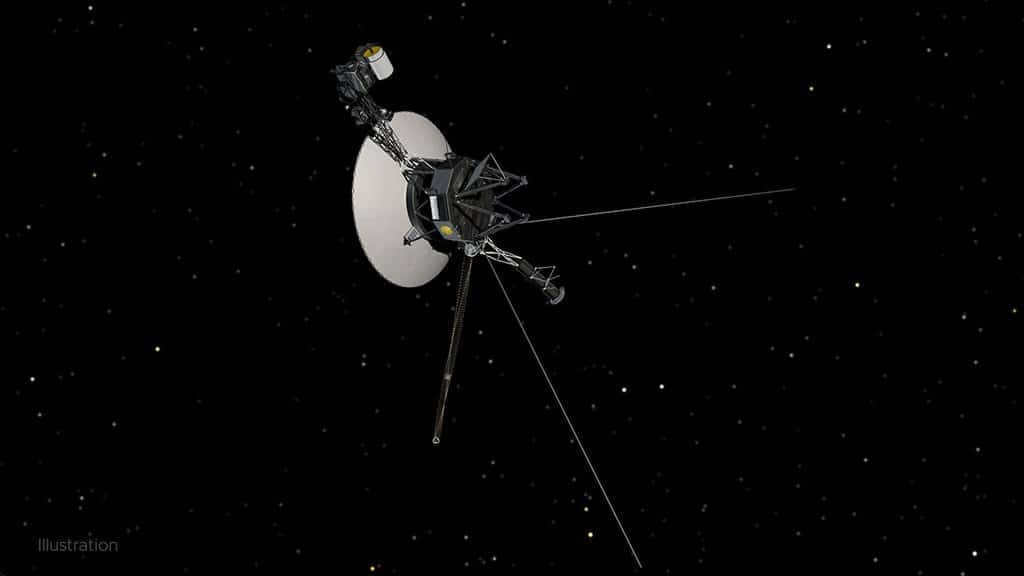
For over half a century, humans have been sending spacecraft into the vastness of outer space. Out of the numerous probes launched, five have successfully made it to or are currently on their way to the outer reaches of our solar system: the Pioneer 10, Pioneer 11, Voyager 1, Voyager 2, and New Horizons. Remarkably, three of these spacecraft are still operational, surpassing their initial mission objectives.
Voyager 1 and 2
The 45th anniversary of the Voyager mission was recently celebrated. As of January 1, 2023, Voyager 1 was located over 23,830,940,000 km away from Earth, while its companion was more than 19,890,790,000 km distant. Their primary objective now is to examine the boundaries of the Sun’s impact. Voyager 1 accomplished this by passing through the heliopause, the point at which the influence of solar particles becomes less significant, in 2012. Voyager 2 replicated this feat in 2018.
Despite having been in service for almost fifty years, both probes are still functioning and transmitting data from their scientific instruments (although their cameras have been disabled for decades). They rely on plutonium-powered radioisotope thermoelectric generators (RTGs) to operate. A few months ago, the team in charge of Voyager 1 had to address an issue where the probe was sending distorted information about its whereabouts. Eventually, the engineers identified the cause of the “malfunction” and were able to restore normal operation.
Nevertheless, both probes are continuing to age. It is projected that they will remain operational until at least 2025, at which point they will be permanently lost.
Pioneer 10 and 11
The Pioneer 10 and 11 missions were initiated in 1972 with the objective of conducting the initial exploration of the outer planets within our solar system. These pioneering probes successfully traversed the asteroid belt and accomplished flybys of Jupiter, marking significant milestones in space exploration.
Regrettably, both of these spacecraft, which are now over 50 years old, are no longer operational. Pioneer 10 has been devoid of any communication since 2003, while Pioneer 11 stopped transmitting in 1995. As of the most recent assessment, Pioneer-10 is currently located more than 19,692,000,000 kilometers away from Earth, while Pioneer-11 is situated more than 16,478,000,000 kilometers distant.
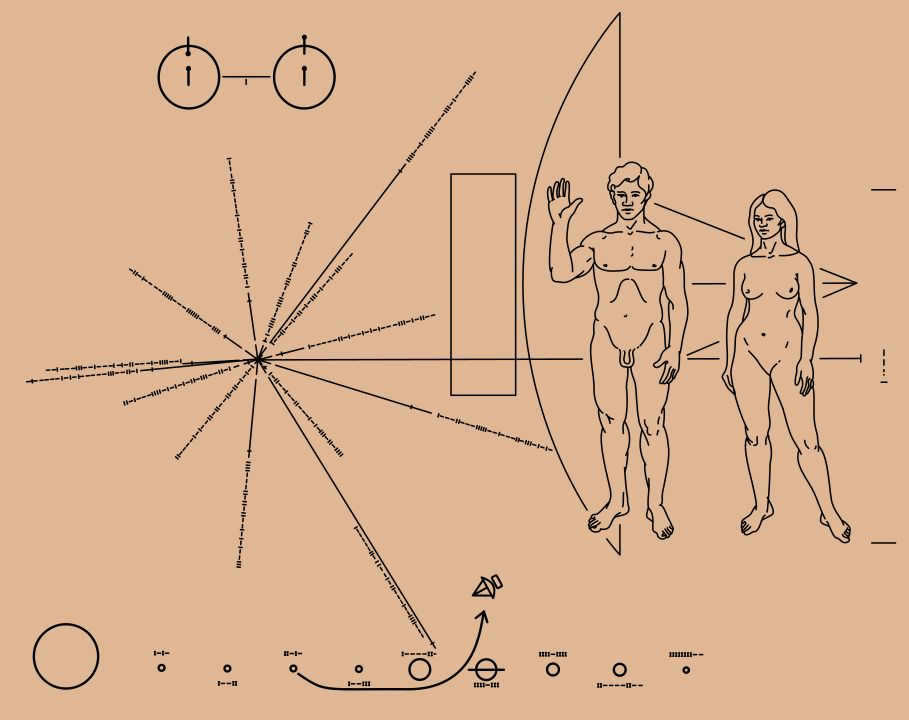
New Horizons
Launched in 2006, New Horizons is the younger sibling of these groundbreaking missions. In 2015, this American probe successfully captured images of Pluto, its initial objective. Three years ago, on New Year’s Day, New Horizons passed by a massive chunk of ice known as 2014 MU69 (also known as Arrokot) in the Kuiper Belt, which is located 43.4 astronomical units away from the Sun.
Its upcoming objective is to explore the far reaches of the solar system. Currently, the spacecraft is approximately 8,366,000,000,000 kilometers away from Earth. In a matter of months, New Horizons will be 60 astronomical units from the Sun, an area that is virtually out of reach for our Earth-based instruments.
During that period, the spacecraft will gather data on the solar wind prior to its arrival at the heliopause. The team in charge of the mission is also getting ready to conduct fresh observations of objects in the Kuiper Belt. Additionally, astronomers are keen to utilize the probe’s location to study Uranus and Neptune, the two ice giants in our solar system, and investigate the phenomenon of light scattering through their atmospheres.
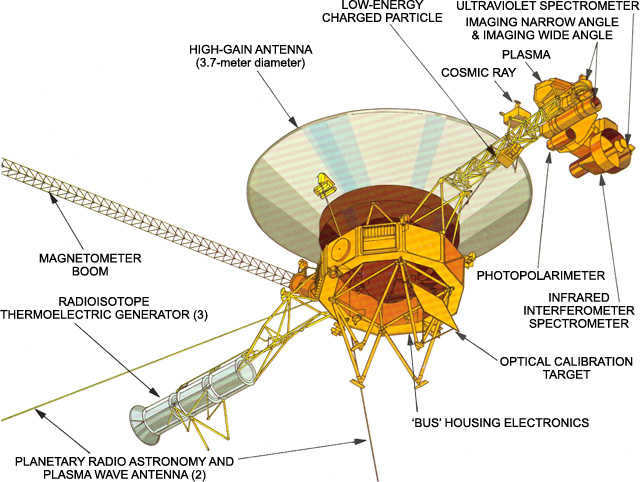
This represents the current position of the Voyager spacecraft from Earth, measured in astronomical units (AU) as well as miles (mi) or kilometers (km).
Please note: Due to the faster movement of Earth around the sun compared to the speed at which Voyager 1 is moving away from the inner solar system, there are certain times of the year when the distance between Earth and the spacecraft actually decreases.
This represents the real-time measurement of the straight-line distance between Voyagers and the sun, measured in astronomical units (AU) as well as miles (mi) or kilometers (km).
The elapsed time it takes for light (or radio signals) to travel between Earth and a celestial object.
Note: Due to the fact that Earth orbits the Sun at a faster pace than Voyager 1 or Voyager 2, the amount of time it takes for light to travel one-way between Earth and each spacecraft actually decreases at certain times throughout the year.
This gauge illustrates the significant fluctuations in the measurements obtained by Voyager’s cosmic ray instrument. The instrument observed a decline in the levels of charged particles originating from within our heliosphere (shown in green), as well as an increase in the levels of cosmic rays – charged particles that originate from stars other than our sun (shown in orange). These findings indicated that Voyager 1 entered interstellar space on August 25, 2012, when the internal particles (green) approached 0.0 and the external particles (orange) exceeded 2.0.
Current State of the Instrument
What is the current location of the Voyager spacecrafts?
If you want to find out the current whereabouts of the Voyager spacecrafts, you can zoom in and rotate them in the NASA Eyes on the Solar System app. This interactive experience allows you to track the real trajectories of Voyager 1 and Voyager 2, with updates every five minutes. The app provides real-time information on their distances and velocities. To fully immerse yourself in a 3D experience, click on the View Voyagers link below to launch the NASA Eyes on the Solar System app.
Space Flight Operations Schedule (SFOS)
The SFOS documents display the Voyager’s operations on the Deep Space Network (DSN).
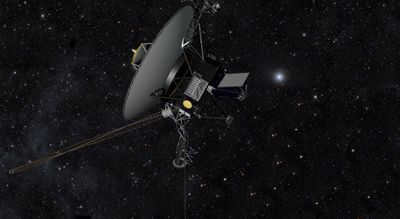
It has been many years since the launch of the Voyager 1 and Voyager 2 spacecraft. Since 1977, these two automatic interplanetary stations have embarked on a grand space mission to explore the distant planets of the Solar System.
Throughout their expedition, the Voyager spacecraft have accomplished a great deal. They have collected valuable information about the giant planets, made discoveries of new satellites and rings, and Voyager-2 even had the opportunity to visit Uranus and Neptune. In 1990, the mission concluded, and the Voyagers continued on their farthest journey yet – a flight into the unknown!
Now, let’s discover where these remarkable spacecraft are today. But first, a brief history. Interestingly, not many people are aware that the Voyagers almost didn’t make it into space. Initially, the plan was for the Mariner 10 and Mariner 11 spacecraft to take their place.
The program was initiated in 1962, but the beginning was not as successful as expected. The first attempt to send the Mariner-1 spacecraft to Venus was unsuccessful due to a deviation in its trajectory during launch, resulting in the spacecraft having to be destroyed.
The commencement of the mission
In 1977, spacecraft were launched from the launch vehicles. The first one to be launched was Voyager 2 in late August of that year, followed by Voyager 1 two weeks later in September.
On March 5, 1979, Voyager 1 came as close as possible to Jupiter.
On July 9, 1979, Voyager 2 passed very close to Jupiter.
In November 1980, Voyager 1 passed close to Jupiter’s moon Titan.
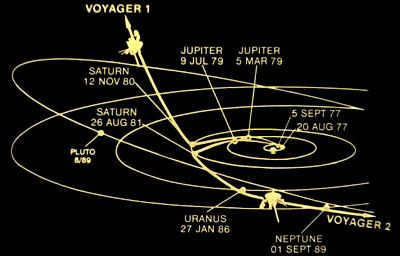

In the year 1980, the spacecraft known as “Voyager 1” made a sudden alteration in its course while in close proximity to Saturn. It experienced a gravitational boost, causing it to ascend above the orbital plane of our solar system. This significant change set it on a new trajectory towards the vastness of interstellar space.
Mission Modifications. Fresh assignments
August 26, 1981. “Saturn is explored by Voyager 2. Scientists make the decision to dispatch the spacecraft to Uranus and Neptune.
January 24, 1986. “Uranus is reached by Voyager 2, beaming back extraordinary visuals to Earth.
August 1989. “Voyager 2” makes a close encounter with Neptune (a mere 3,900 km from Neptune’s northern pole), examining the planet and transmitting a plethora of novel details and images.
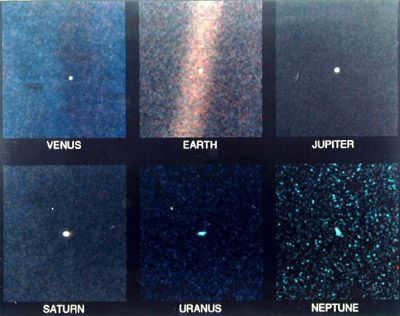

Conclusion of the research program
On February 14, 1990, the cameras of Voyager 1 were directed towards the planets of the solar system, capturing a “Family Portrait” which included the iconic image of Earth taken from a distance of 6 billion kilometers.
On February 17, 1998, Voyager 1, traveling at a speed of 17.0 km/s, overtook another spacecraft named Pioneer 10. Both spacecraft had completed their missions, but Pioneer 10 continued its journey towards the star Aldebaran. It is estimated that Pioneer 10 will reach the star in approximately 2 million years.
On August 30, 2007, Voyager 2 reached the shockwave zone and entered the heliopause region.
Key Moments in the Voyagers’ Journey
December 13, 2010. “Voyager 1 reaches a significant milestone on its voyage as it arrives at the approximate outer limits of the solar system, where the speed of solar wind streams reaches zero (116.38 a.u.).
November 4, 2011. “Voyager 1” receives a crucial command from Earth to activate a backup set of engines, which enables the spacecraft to prolong its operational lifespan for an additional 10 years. Earth receives confirmation of this successful switch 10 days later.
December 2011. As Voyager 1 approaches the edges of the Solar System, it encounters a significant turning point known as the stagnation region, where the strength of the magnetic field has doubled compared to its previous measurements.
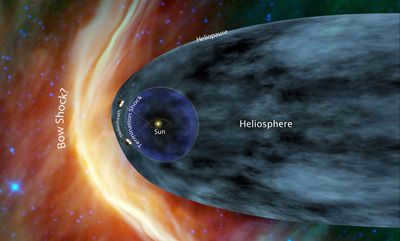
June 14, 2012. The spacecraft known as Voyager 1 is currently journeying towards the boundary of interstellar space. This information has been obtained through the analysis of data regarding the significantly increased level of galactic cosmic rays, which are believed to originate from outside our solar system.
November 3, 2012. At this point in time, Voyager 2 was located 100 astronomical units (a.u.) away from the Sun. Additionally, the power output of the three radioisotope thermoelectric generators, which are powered by Plutonium-238, on both Voyager spacecrafts had dropped by 45%. This decrease in power can be attributed to the natural decay of plutonium and the degradation of thermocouples.
September 12, 2013. The detection of a release of rarefied gas emanating from the Sun was made by sensors aboard Voyager 1. This discovery was officially confirmed by NASA and published in Science Magazine, indicating that Voyager 1 had exited the heliosphere and entered interstellar space. However, it is important to note that this does not mean the spacecraft has traveled beyond the boundaries of our solar system.
As a result, Voyager 1 has become the first man-made object to venture into the heliopause and provide insights into the conditions of the interstellar medium. The spacecraft is currently on a trajectory towards the center of our Milky Way galaxy. At its current position, the spacecraft is situated 19 billion kilometers away from Earth, with its signals taking approximately 17 hours to reach our planet.
November 28, 2017. A team of researchers from Earth successfully conducted a test on four MR-103 trajectory correction engines by activating them briefly for 10 milliseconds each. These engines had not been used in 37 years, with their last activation occurring on November 8, 1980, to correct the flight path of Voyager 1 near Saturn.
2020. “Voyager-1” has traveled a distance of 22 billion kilometers from the Sun, while “Voyager-2” has traveled 18 billion kilometers. Both spacecraft have been exploring outer space for over 42 years. Scientists anticipate maintaining communication with the Voyagers until 2025, even if they have to cross the heliopause around that time.
What is the current location of the Voyager spacecrafts?
You can find the most up-to-date information about the current whereabouts of the Voyager spacecrafts on NASA’s official website dedicated to the Voyager research mission, specifically the page titled “Where Are The VOYAGERS?”.
What is the next destination for the Voyager spacecraft?
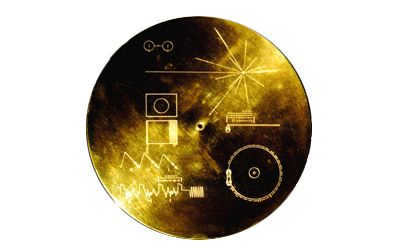
Contained within each Voyager spacecraft is a unique gold record that holds a message intended for potential extraterrestrial civilizations. This record includes a combination of text, images, and music, along with the necessary tools to play them, such as tracks and needles. Additionally, the record features an address given by Jimmy Carter, who served as the President of the United States at the time of the Voyager’s launch in 1977. The creation of this message was overseen by Carl Sagan, a renowned scientist and designer.
Communication terminated. Complementary air travel
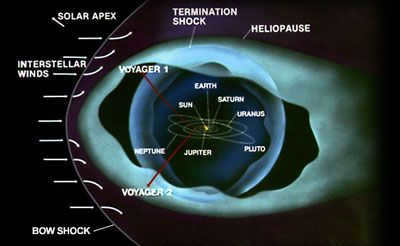
~2020-30 г. The primary objective of Voyager’s final mission is to conduct an in-depth exploration of the heliosphere. Following the successful journey of Voyager-1, Voyager-2 has also successfully traversed the boundaries of the heliopause and has now entered the vast expanse of interstellar space. As Voyager-2 ventures further away from the Sun, there is a noticeable decrease in the speed of the solar wind, creating a region known as the shock boundary. It is believed that both Voyager spacecraft have reached and potentially surpassed this shock boundary, which can be considered as the outer limit of the inner heliosphere. Although there is still much to be understood about this region, the prevailing data suggests that the heliosphere concludes at this point.
In approximately 2025, it is expected that both Voyager 1 and Voyager 2 will have depleted their energy reserves from the three radioisotope thermoelectric generators and will enter into a state of drifting in the vast expanse of the galaxy. Alongside the inevitable loss of transmitter power for transmitting data back to Earth, another issue arises. The Sun, situated at a considerable distance, will appear too faint for the Voyagers, potentially resulting in a loss of the solar sensor’s functionality. As a result, the directed radio beam will be deflected away from Earth, leading to a halt in signal reception. This will ultimately result in the Voyagers forever losing contact with humanity.
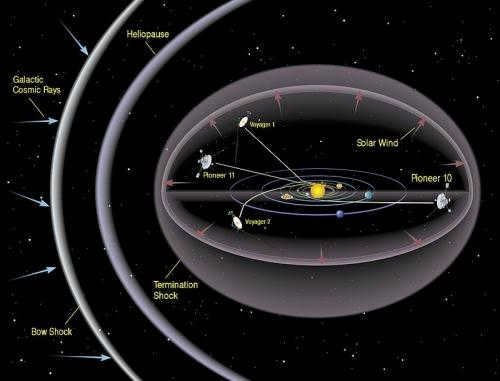
(Spacecraft venturing outside the solar system.)
By the 2300s, “Voyager 2” will no longer be under the gravitational influence of the Sun and will finally depart from the boundaries of the Solar System.
By the 4000s, “Voyager 2” will traverse the initial interstellar gas cloud that surrounds the Solar System (as identified by the Hubble Telescope, there are three such interstellar clouds).
By 8,571 AD, “Voyager 2” will have reached a distance of 4 light-years from Barnard’s Star.
By 20,319 AD, “Voyager 2” will be approximately 3.5 light-years away from the star Proxima Centauri.
Approximately 42,000 years ago, the spacecraft Voyager-1 was projected to travel approximately 1.6 light-years (equivalent to 15 trillion kilometers) away from the star Gliese 445 (also known as AC+79 3888) in the constellation Giraffe. It was also predicted to be at a distance of 1 parsec (equivalent to 31 trillion kilometers) away from the Solar System. Another spacecraft, Voyager 2, was expected to come within 1.7 light-years (equivalent to 15 trillion kilometers) of the star Ross-248, which is a single star located in the constellation Andromeda and is approximately 10.3 supergalactic years away from the Sun. Voyager 2 was also projected to be 1 parsec (equivalent to 31 trillion kilometers) away from the Solar System.
Approximately 90,000 years ago, Voyager 2 was set to pass through the second interstellar gas cloud and enter the third one. These three interstellar structures have distinct chemical compositions and contain different elements, indicating that their formation and subsequent evolution are unique.
Approximately 296,036 years ago, Voyager 2 was anticipated to pass by Sirius, a star located at a distance of 4.3 light-years.
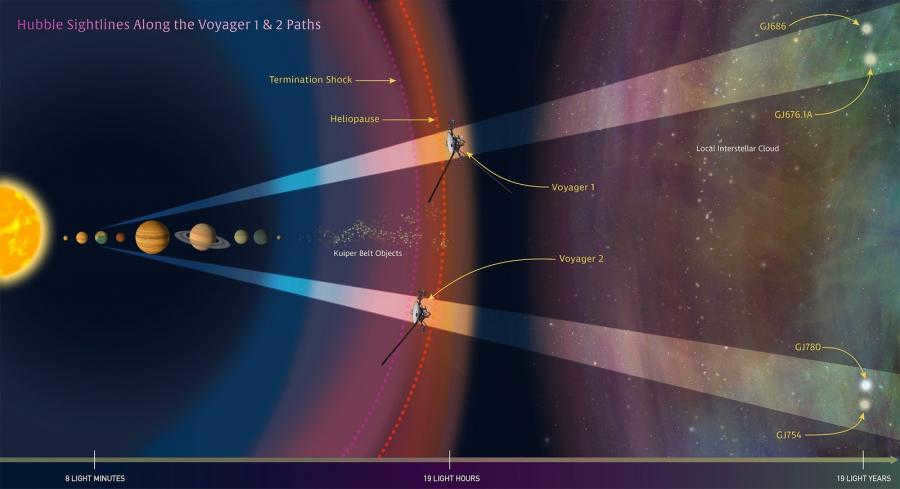
It is worth noting that during specific periods throughout the year, Voyager 2 actually gets closer to Earth and the distance between them starts to decrease. This periodic, temporary approach happens because Earth is moving faster than the Sun, causing Voyager 2 to move away from it.
What Comes After:
~ In the distant future ~it is probable that the Voyagers will perpetually wander the vastness of the Milky Way galaxy, millions of years from now.
Currently, NASA is actively seeking individuals nationwide who played a part in the launch of these spacecraft into outer space.
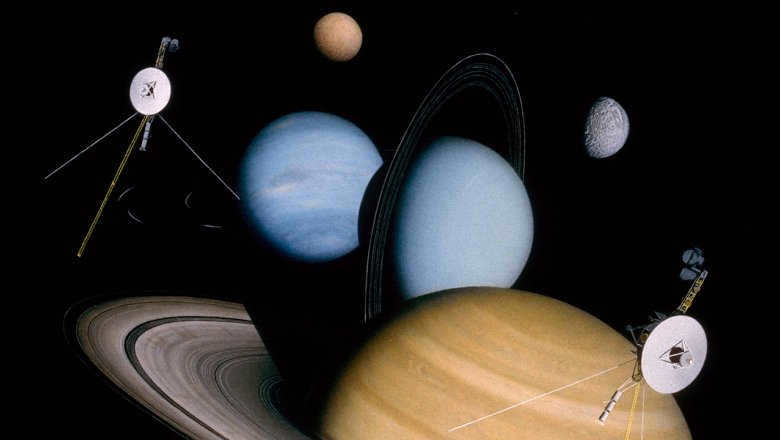
The Current Whereabouts of Voyager
Originally, it was thought that Voyager 1 and Voyager 2, which were launched into space in the late 1970s, had surpassed their intended missions by a factor of ten. These vehicles were estimated to have a few years of service life, but they have been operational for several decades and should have long since ventured into the depths of space. The point at which it will no longer be possible to receive data from the spacecraft will be surpassed in 2025. However, to the surprise of scientists who had given up hope on the probes, they have started receiving enigmatic sets of data from the spacecraft.
NASA researchers have provided an overview of initial findings regarding the iconic Voyager mission nearing its conclusion. The findings indicate that these spacecraft have provided humanity with a roadmap of the celestial shoreline that separates our solar system from interstellar space. Additionally, in the upcoming year, fresh data will be collected on the “solar plasma,” a phenomenon that significantly impacts the welfare of Earth’s inhabitants. However, it is not this particular information that is causing concern among scientists.
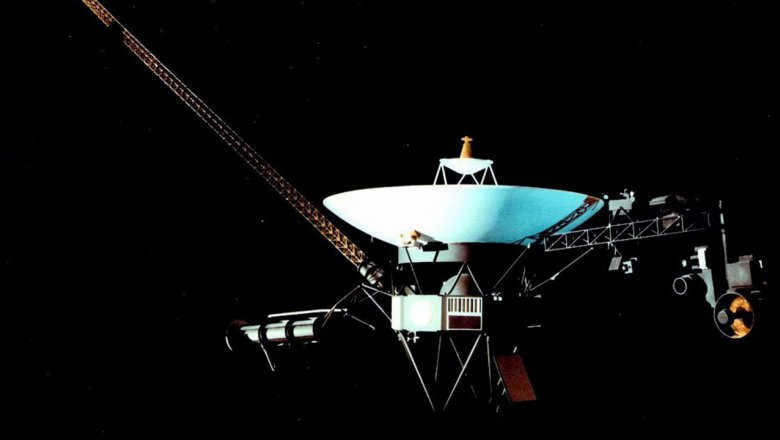
Where is Voyager currently located?
Those individuals who were born in the year of Voyager’s launch and have lived until now are now 45 years old. In the United States, these individuals are known as the Voyager generation, and there is even a movie named “Voyagers” that highlights their story. This incredible NASA space mission revolutionized the field of astronomy and astrophysics, uncovering fascinating insights about Saturn’s turbulent atmosphere and providing valuable information about Jupiter’s ever-changing rings. Additionally, Voyager 1 played a crucial role in discovering the large dark spot known as GDS-89 on Neptune. Without Voyager 1, humanity may not have known about the existence of volcanoes on Jupiter. The Voyager mission truly expanded our knowledge of the universe.
In the 1980s, scientists were astounded to find that the outer moons were not lifeless icy worlds, but rather dynamic bodies that hold valuable information about our solar system, sometimes even more than the planets themselves. In addition to gathering extensive data on the atmospheres of the major planets, the Voyager spacecraft also made significant discoveries about the moons of Uranus and Neptune, as well as the geysers and atmosphere of Saturn’s moon, Titan. Furthermore, they identified three satellites of Jupiter named Adrastea, Thebe, and Metis.
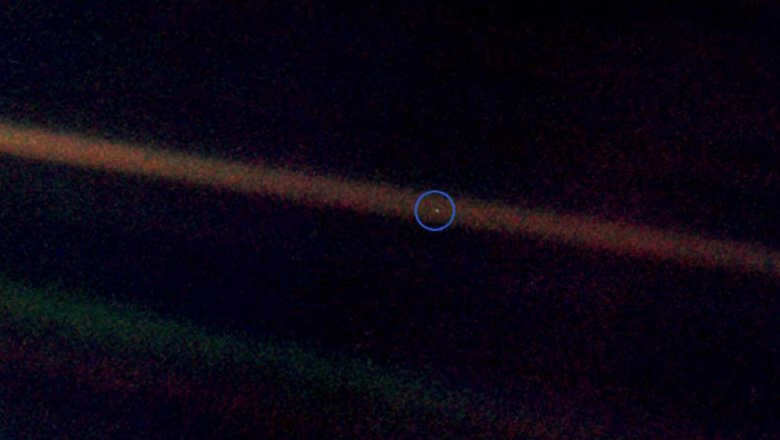
Here is one of the most recent pictures captured by Voyager 1 in 1990 when it was 6 billion kilometers (40 a.u.) away from our planet. This remarkable image was obtained by NASA.
Take a look at these fascinating pictures taken by both Voyager 1 and Voyager 2.
“Voyager 2 made history as the first and only Earth spacecraft to venture to Uranus and Neptune. The mission to capture Neptune was particularly challenging due to its extreme darkness, which is 900 times greater than that on Earth or the Moon. Leading the filming process was Carl Sagan, who had to carefully maneuver the probe to synchronize the camera’s movement with Voyager’s trajectory. Despite the difficulties, mankind now possesses stunning images of Neptune. One of the most iconic images from the famous “Family Portrait” series of the solar system is the Pale Blue Dot, which depicts Earth from a distance of six billion kilometers. In this image, Earth appears as a faint blue dot, a testament to our planet’s insignificance in the vastness of space. Carl Sagan eloquently captured the essence of this image with his words:
“This detached image of our minuscule world is perhaps the ultimate display of human arrogance. It appears to highlight our obligation, our responsibility to treat each other with kindness, and to cherish and protect the fragile blue dot that we call home.”
Each Voyager spacecraft consists of 65,000 components, many of which contain numerous smaller parts, such as transistors. It is an incredibly intricate and sophisticated system, especially considering the time it was built. The power supply for the Voyagers utilized plutonium-238, allowing the probes to function for significantly longer than originally anticipated.
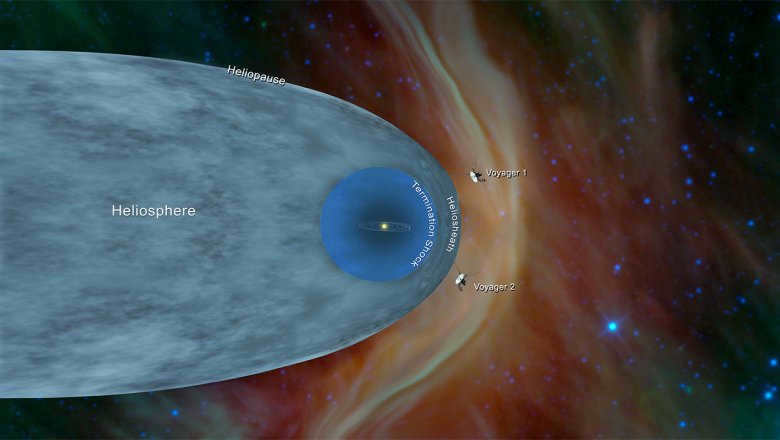
Is it a call for help or a call for prey?
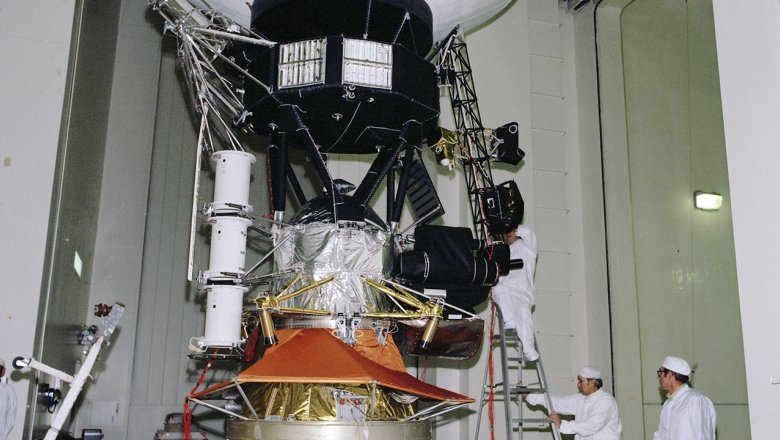
Mysterious transmissions from the cosmos
In 2021, both Voyagers detected unusual signals that were transmitted back to Earth. One report suggests that these signals could be the result of interstellar matter, while others believe they may be caused by powerful solar flares. Another theory proposes that the space beyond the solar system resembles a frothy soap foam, and the probes picked up the movement of particles within this foam, which is quite surprising in itself. Astrophysicist Stella Oker from Cornell University has concluded that the signals captured by the Voyagers can be used to measure the density of plasma throughout the year, as well as track the movement of its particles. It has been discovered that at a certain point, these particles are no longer influenced by the Sun’s gravity and venture into interstellar space, filling it up to the outer boundaries of the heliosphere. This region marks the start of something completely inaccessible to humanity, and the Voyagers have provided valuable data in mapping this “coastline” that separates our Solar System from interstellar space.
However, in the early months of 2022, a significant revelation was made by scientists. It was revealed that the devices that ventured beyond our solar system… are actually in closer proximity to Earth, which explains their unexpected reconnection and transmission of data. According to researchers, the Voyagers’ unconventional trajectory through space is the culprit. Instead of following a linear path, the spacecrafts navigate through a spiral formation, influenced by a colossal force within our solar system. Periodically, they align with our planet, causing the transmission modules on the probes and NASA’s formidable antennas on Earth to synchronize for the purpose of data transmission.





